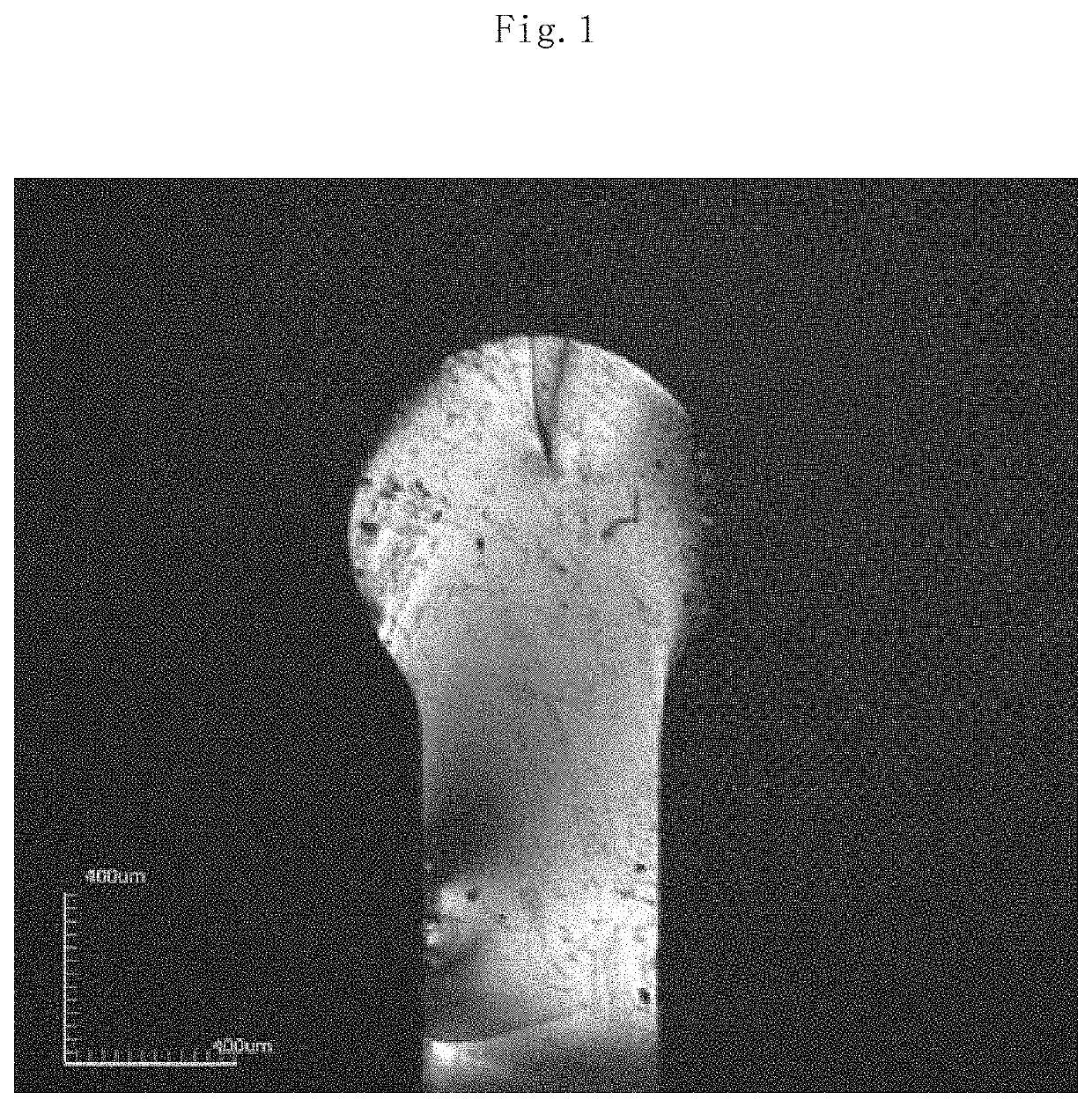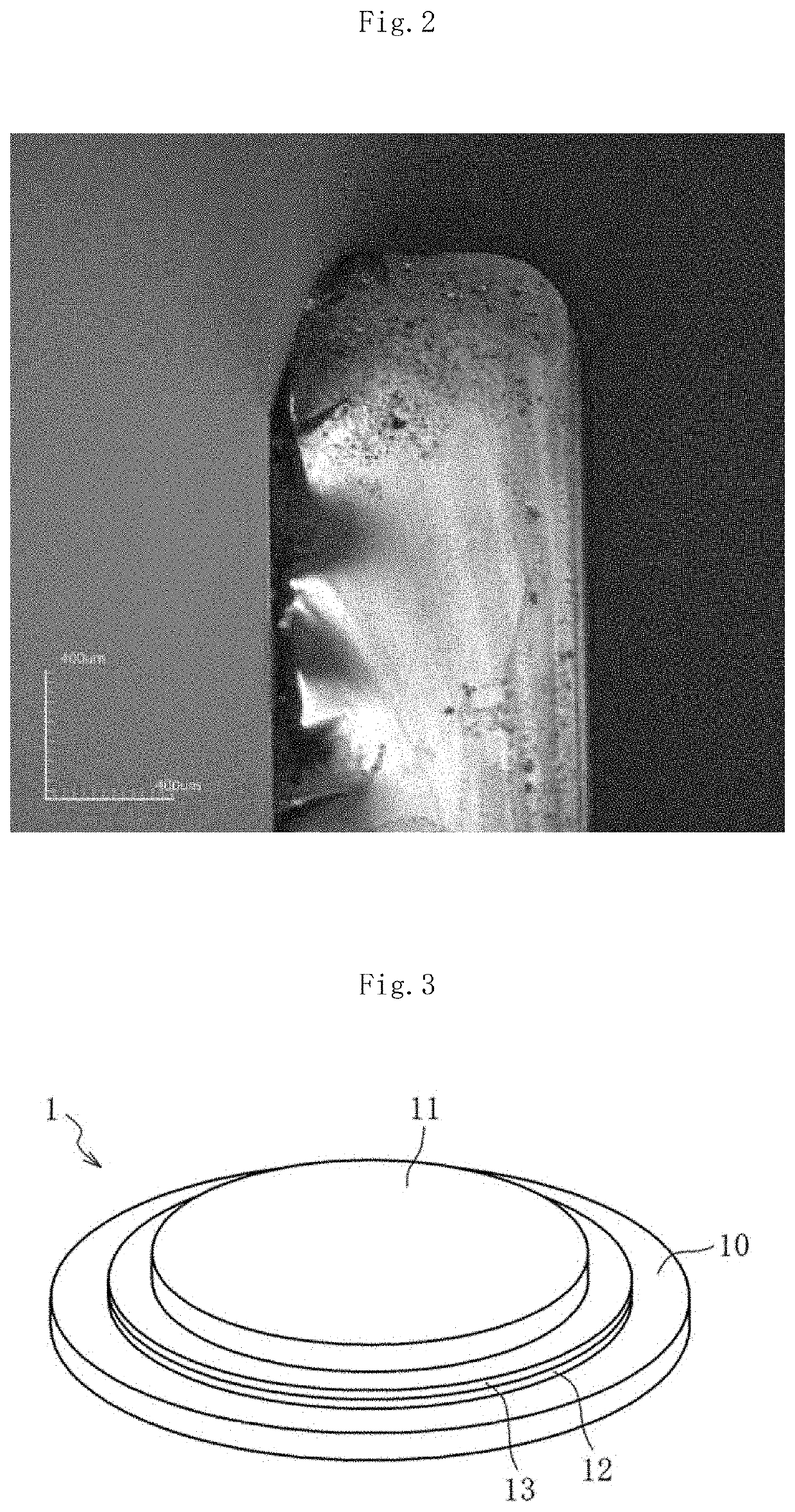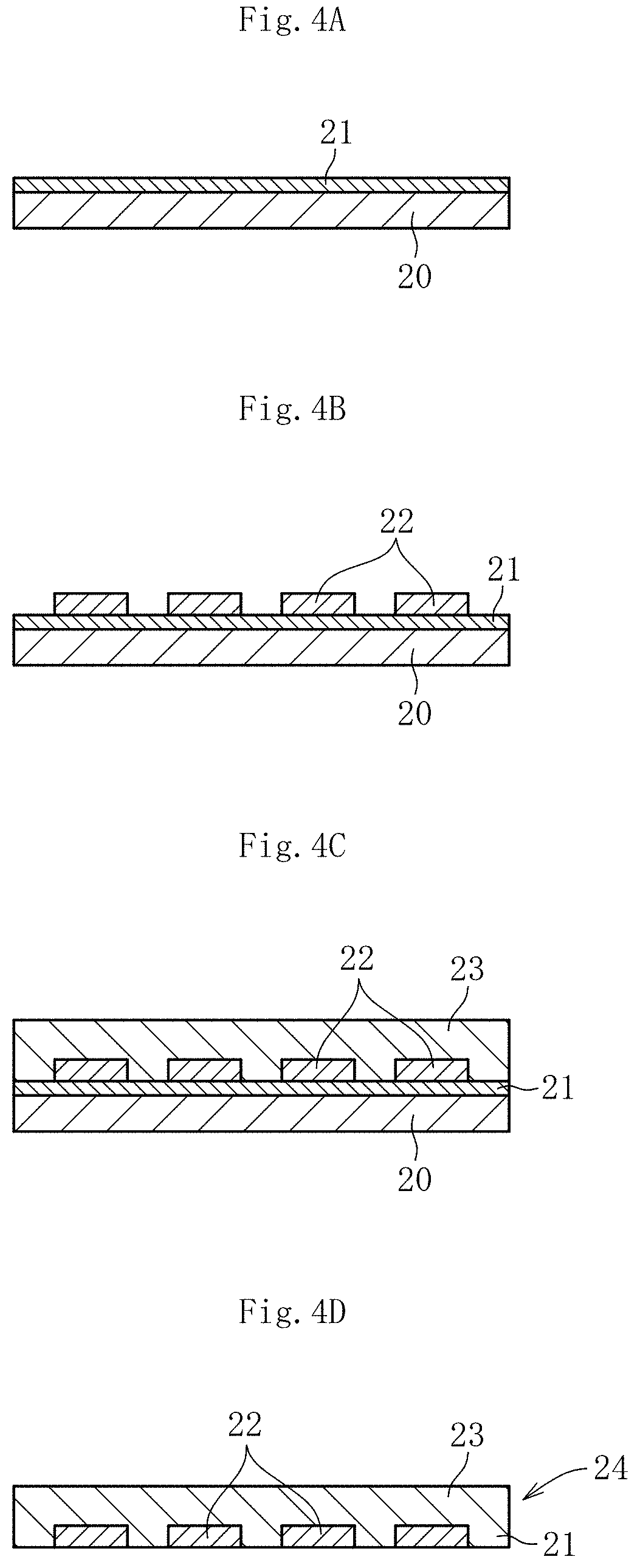Method of manufacturing glass sheet
a glass sheet and manufacturing method technology, applied in glass making apparatus, manufacturing tools, semiconductor/solid-state device details, etc., can solve the problems of difficult to increase the number of pins, limited mounting space for semiconductor chips to be used in those electronic devices, and high-density mounting of semiconductor chips, etc., to achieve enhanced processing accuracy, high-density wiring, and easy enhancement of processing treatment
- Summary
- Abstract
- Description
- Claims
- Application Information
AI Technical Summary
Benefits of technology
Problems solved by technology
Method used
Image
Examples
example 1
[0081]Now, the present invention is described with reference to Examples. However, Examples below are merely examples, and the present invention is by no means limited to the following Examples.
[0082]Glass raw materials were blended so as to comprise as a glass composition, in terms of mass %, 65.2% of SiO2, 8% of Al2O3, 10.5% of B2O3, 11.5% of Na2O, 3.4% of CaO, 1% of ZnO, 0.3% of SnO2, and 0.1% of Sb2O3. After that, the resultant was loaded into a glass melting furnace to be melted at from 1,500° C. to 1,600° C. Then, the molten glass was supplied into an overflow down-draw forming apparatus to be formed to a thickness of 0.7 mm.
[0083]Next, the obtained mother glass sheet was hollowed out into a wafer shape to provide a glass sheet. The entire end surface of the glass sheet was continuously irradiated with a CO2 laser. Thus, the entire end surface of the glass sheet was melted to form a spherical expanding portion. Then, the resultant was solidified by cooling. Further, the glass ...
example 2
[0091]First, glass raw materials were blended so as to have a glass composition of each of Sample Nos. 1 to 7 shown in Table 4. After that, the resultant was loaded into a glass melting furnace to be melted at from 1,500° C. to 1,600° C. Then, the molten glass was supplied into an overflow down-draw forming apparatus to be formed to a thickness of 0.8 mm. After that, the mother glass sheet was hollowed out into a wafer shape to form a melt-solidified surface on the entire end surface of the obtained glass sheet under the same condition as that of [Example 1], and further subjected to annealing treatment. Each of the obtained glass sheets was evaluated for an average thermal expansion coefficient α30-380 within a temperature range of from 30° C. to 380° C., a density ρ, a strain point Ps, an annealing point Ta, a softening point Ts, a temperature at a viscosity at high temperature of 104.0 dPa·s, a temperature at a viscosity at high temperature of 103.0 dPa·s, a temperature at a visc...
PUM
| Property | Measurement | Unit |
|---|---|---|
| thickness | aaaaa | aaaaa |
| thickness | aaaaa | aaaaa |
| thickness | aaaaa | aaaaa |
Abstract
Description
Claims
Application Information
 Login to View More
Login to View More - R&D
- Intellectual Property
- Life Sciences
- Materials
- Tech Scout
- Unparalleled Data Quality
- Higher Quality Content
- 60% Fewer Hallucinations
Browse by: Latest US Patents, China's latest patents, Technical Efficacy Thesaurus, Application Domain, Technology Topic, Popular Technical Reports.
© 2025 PatSnap. All rights reserved.Legal|Privacy policy|Modern Slavery Act Transparency Statement|Sitemap|About US| Contact US: help@patsnap.com



